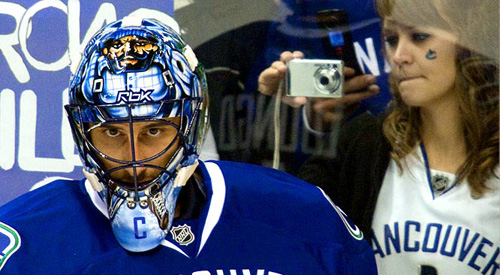
From east to west: The NHL’s Northwest Division
Highlighted, or perhaps lowlighted, by Vancouver’s Game 7 collapse against Boston in last June’s Stanley Cup Final – and the rioting that ensued after – the 2010-11 season did not end on a high note for the Northwest Division.
Sure, there are positives to be found in any organization, but it’s no secret that the Calgary Flames, Minnesota Wild, Colorado Avalanche and Edmonton Oilers watched in horror as the Canucks terrorized the division last year, recording 23 more points than second-place Calgary.
A new season represents a fresh start, something surely that the teams – the Oilers and Avalanche in particular – have been anticipating since the 2011 NHL Entry Draft. In Ryan Nugent-Hopkins and Gabriel Landeskog respectively, each added another hotshot prospect to their cores already in place.
Amid rumors of a possible Paul Stastny trade, the Avalanche shuffled the deck and completely revamped their goaltending. Acquiring Semyon Varlamov for a first- and a second-round pick was a steep price to pay for a team in transition and a goaltender who has not exactly cemented his reputation as a legitimate starter in the league. However, the addition of Jean-Sebastien Giguere compliments the Varlamov trade nicely, while giving the latter more time to develop. Whether the youngest of the two netminders for the Avs evolves into a quality goalie is anyone’s guess, making their overall situation somewhat uncertain from a preseason perspective.
Stealing headlines from Colorado in the offseason was Minnesota. General manager Chuck Fletcher orchestrated a pair of bold moves and another trade, which was more or less predictable. While Dany Heatley’s point potential is declining, he remains a solid top-six forward and easily a first-line player on a middling offense like Minnesota’s. If utilized in the right circumstances with complementary linemates, he is capable of scoring at least 30 goals and 70 points.
[php snippet=1]
In all likelihood, Heatley will start the season on the team’s first line alongside Mikko Koivu and Devin Setoguchi. Which, simply put, means Minnesota’s offense has improved – in a big way. If they can rely on their top-six forwards for most of their offensive efforts, while also receiving steady contributions from role players like Cal Clutterbuck and Eric Nystrom, the Wild will be a threat in the West.
With all things considered, the State of Hockey is in for a refreshing change with a new and upbeat mentality implemented with the arrival of Mike Yeo, the team’s recently appointed head coach. For the Wild to have any shot at making the playoffs, though, they need to score more goals – plain and simple.
Carrying the Oilers’ hopes at playing past April for the first time in five years will be the team’s young core, led by Taylor Hall and Jordan Eberle. First-overall pick Nugent-Hopkins adds to an already impressive group, which also includes Magnus Pajaarvi and Sam Gagner. After he adjusts to the physical rigors of pro hockey, he will have to find his niche as a top-six regular with Edmonton.
One player who is already built for the trials and tribulations of the NHL is Colorado’s Landeskog, the second-overall pick in the draft, described by scouts as the most NHL-ready player poised to step into the lineup. Not only does he expect to step in the lineup, he expects to make an impact.
From an outsider’s perspective, the Northwest looks like a one-horse race, just as it was last season, but it would be ignorant to doubt that any of the other four teams do not have a realistic shot at making the playoffs.
Yes, Vancouver is certainly primed to finish first. But, how the rest of the division shakes out is very unpredictable, and that can only be a good thing.
[php snippet=1]

